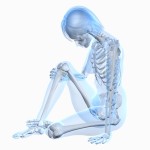If you or someone you know has osteoporosis, you should know that medication alone is not sufficient for the complete management of osteoporosis. Exercise is also necessary. A comprehensive program that includes strengthening the core musculature, hips and lower extremities is beneficial and decreases fragility.
Studies have shown that strengthening exercises for the major muscles groups combined with aerobic exercise has a small but positive effect on bone mass density in postmenopausal women with low bone mass density.
 When treating osteoporosis, the goal of the exercise program is to increase muscle strength safely, decrease immobility-related complications, and prevent fall and fracture. As with any exercise program, rehabilitation programs need to be individualized.
When treating osteoporosis, the goal of the exercise program is to increase muscle strength safely, decrease immobility-related complications, and prevent fall and fracture. As with any exercise program, rehabilitation programs need to be individualized.
Weight-bearing exercises such as walking are important for maintaining bone mass density. Strengthening the trunk muscles can improve bone mass density and the mobility of older adults, as well as decrease both excessive rounding of the back and the risk of fractures.
In men and women, the combination of age-related muscle loss and decline in physical activity can affect mobility and contribute to bone fragility and falls. Bone mass is frequently considered the most important determinant of fragility, but it explains less than half of the observed fracture risk. Many fractures are fall related, therefore the prevention of falls is as essential as increasing bone mass.
Studies have shown that even when exercise and rehabilitative measures do not increase bone mass, they can still be beneficial for reducing the occurrence of fractures, improving muscle imbalance and decreasing the risk of falls.
